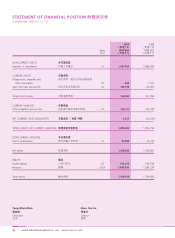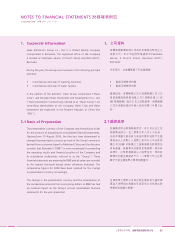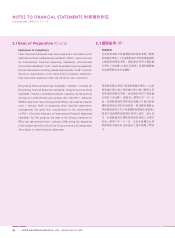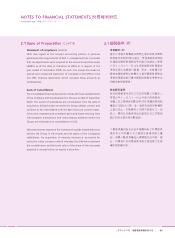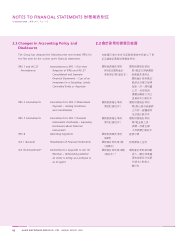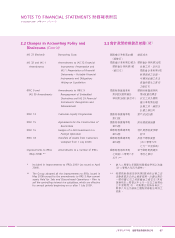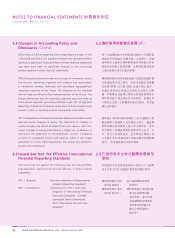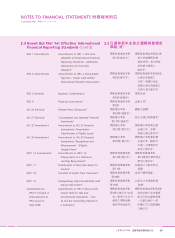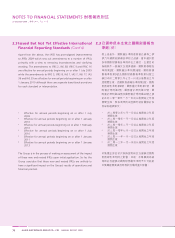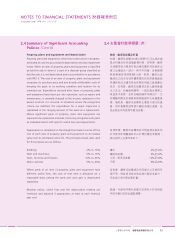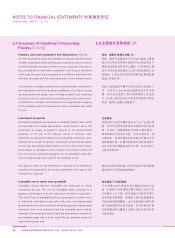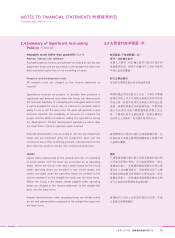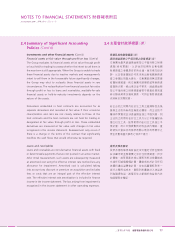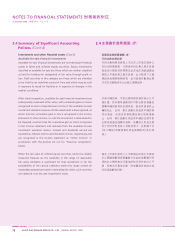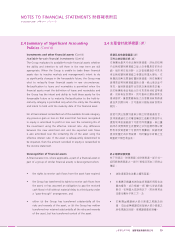Haier 2009 Annual Report Download - page 73
Download and view the complete annual report
Please find page 73 of the 2009 Haier annual report below. You can navigate through the pages in the report by either clicking on the pages listed below, or by using the keyword search tool below to find specific information within the annual report.
31 December 2009
NOTES TO FINANCIAL STATEMENTS 財務報表附註
海爾電器集團有限公司 71
2.4 Summary of Significant Accounting
Policies
Subsidiaries
A subsidiary is an entity whose financial and operating policies the
Company controls, directly or indirectly, so as to obtain benefits
from its activities.
The results of subsidiaries are included in the Company’s income
statement to the extent of dividends received and receivable. The
Company’s interests in subsidiaries are stated at cost less any
impairment losses.
Impairment of non-financial assets other than goodwill
Where an indication of impairment exists, or when annual
impairment testing for an asset is required (other than inventories,
deferred tax assets and financial assets), the asset’s recoverable
amount is estimated. An asset’s recoverable amount is the higher
of the asset’s or cash-generating unit’s value in use and its fair value
less costs to sell, and is determined for an individual asset, unless the
asset does not generate cash inflows that are largely independent
of those from other assets or groups of assets, in which case the
recoverable amount is determined for the cash-generating unit to
which the asset belongs.
An impairment loss is recognised only if the carrying amount of
an asset exceeds its recoverable amount. In assessing value in use,
the estimated future cash flows are discounted to their present
value using a pre-tax discount rate that reflects current market
assessments of the time value of money and the risks specific to
the asset. An impairment loss is charged to the income statement
in the period in which it arises.
An assessment is made at the end of each reporting period as
to whether there is any indication that previously recognised
impairment losses may no longer exist or may have decreased.
If such an indication exists, the recoverable amount is estimated.
A previously recognised impairment loss of an asset other than
goodwill is reversed only if there has been a change in the estimates
used to determine the recoverable amount of that asset, but not
to an amount higher than the carrying amount that would have
been determined (net of any depreciation/amortisation) had no
impairment loss been recognised for the asset in prior years. A
reversal of such an impairment loss is credited to the income
statement in the period in which it arises.
2.4



